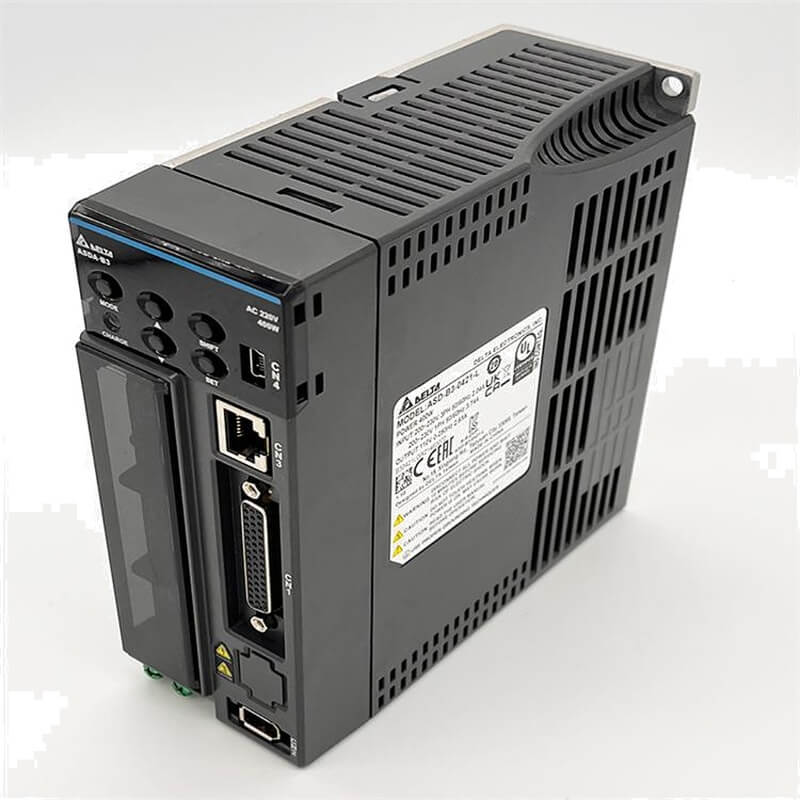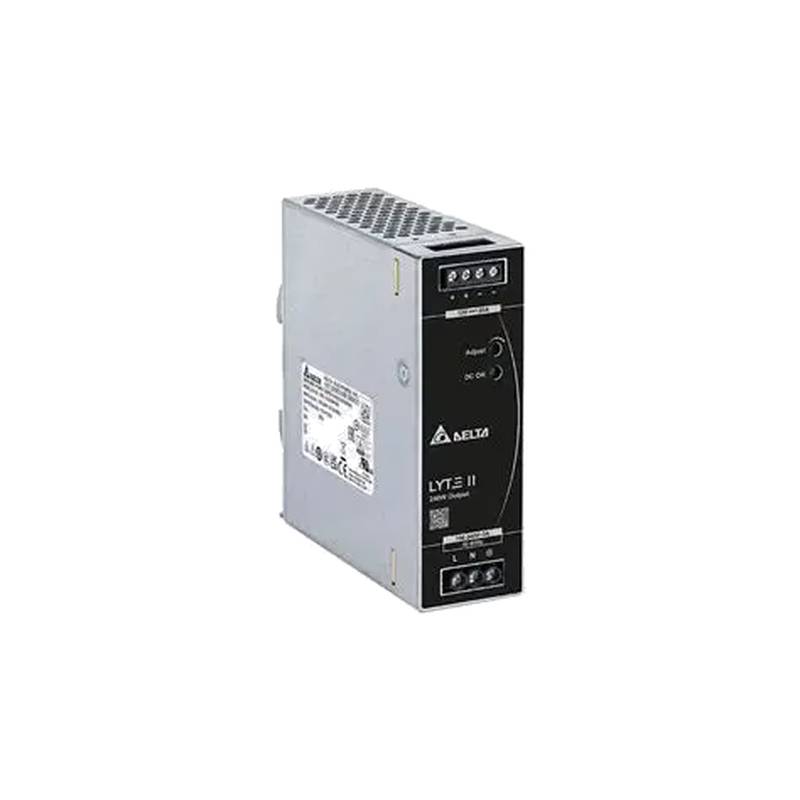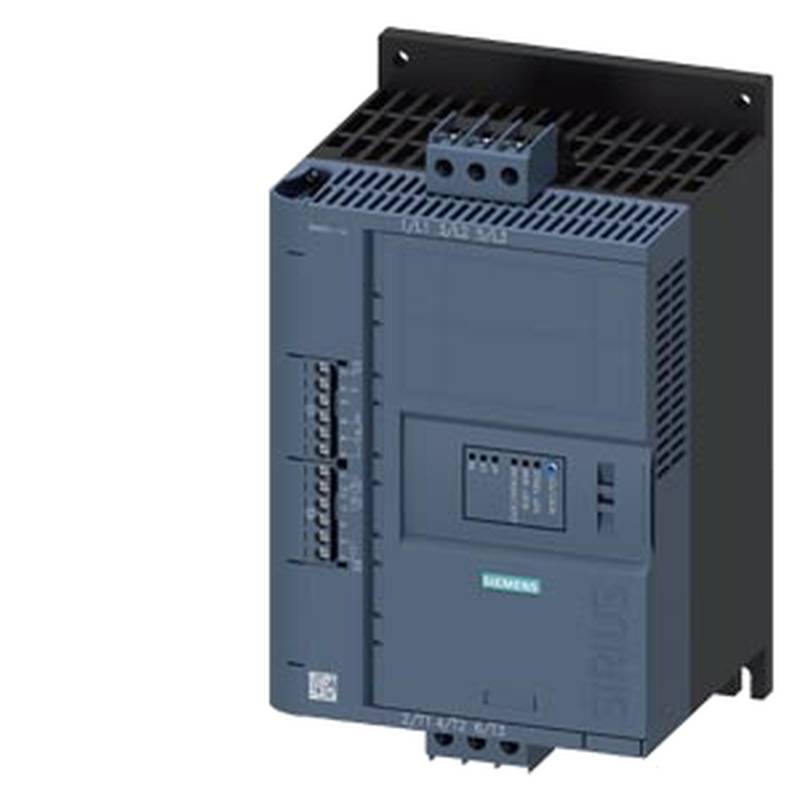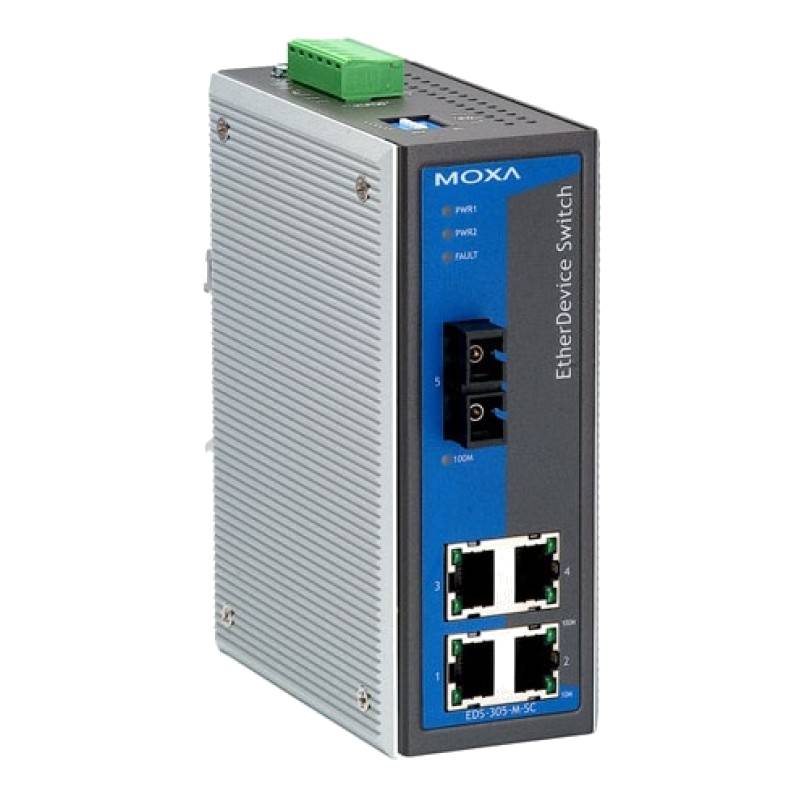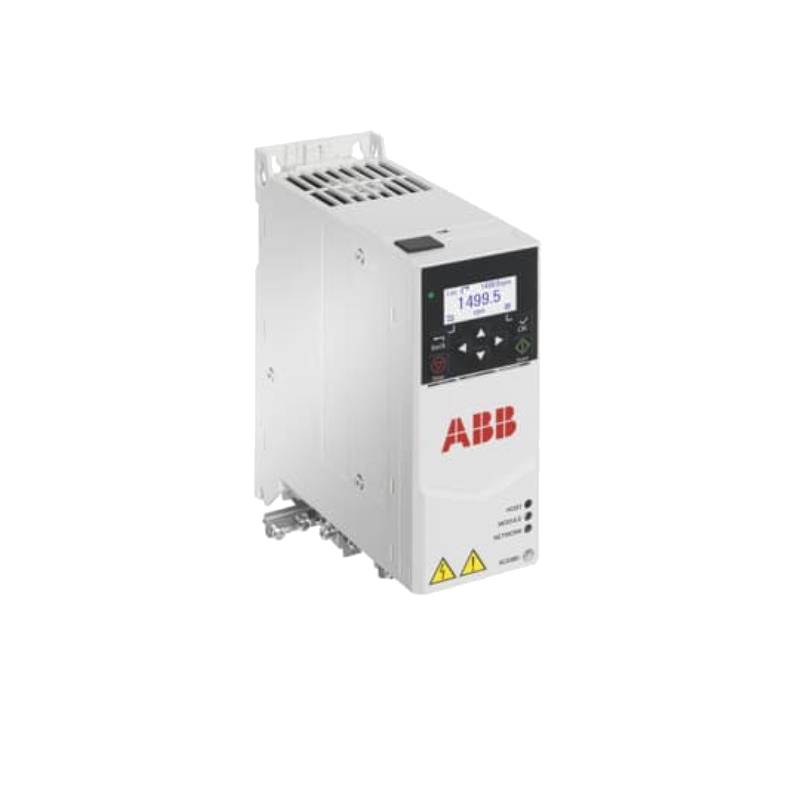
The Delta VFD13AMS43ANSAA MS300 Medium Fan Drive is engineered to deliver robust and efficient motor control for demanding industrial fan applications. This variable frequency drive (VFD) boasts a powerful 5.5kW (7.5 HP) motor rating and a 13A current capacity, ensuring reliable operation even under significant load. Its intelligent motor protection features safeguard connected equipment from electrical faults, extending service life and minimizing downtime. Designed for versatility and ease of integration, the MS300 series excels in optimizing fan performance, reducing energy consumption, and enhancing overall system efficiency across various industrial sectors.
Product Specifications
| Parameter | Specification |
| :-------------------- | :---------------------------------------------- |
| Model | VFD13AMS43ANSAA |
| Series | MS300 |
| Input Voltage | 3 Phase, 380-480V AC |
| Output Current | 13A |
| Motor Power (kW) | 5.5kW |
| Motor Power (HP) | 7.5HP |
| Output Frequency | 0.00Hz to 600.00Hz |
| Control Method | Advanced V/f, Sensorless Vector Control |
| Protection Features | Overload, Overvoltage, Undervoltage, Phase Loss |
| Communication Options | Modbus RS-485 |
| Operating Temperature | -20°C to 50°C |
| Enclosure Rating | IP20 |
Core Features & Market Positioning
The Delta VFD13AMS43ANSAA MS300 drive distinguishes itself through its advanced control algorithms, including sensorless vector control, which provides superior torque performance and speed regulation, even with fluctuating loads. Its built-in motor protection suite, featuring comprehensive safeguards against overcurrent, overvoltage, phase loss, and thermal overload, significantly enhances equipment longevity and operational reliability, a key differentiator in the competitive VFD market. The MS300 series is positioned as a high-value solution for applications demanding precise motor control and robust protection without the complexity or cost of high-end drives. This makes it an attractive option for small to medium-sized enterprises and system integrators seeking dependable performance and ease of use.
Key Application Scenarios
This Delta VFD is exceptionally well-suited for a broad spectrum of industrial fan applications, including HVAC systems in commercial buildings, ventilation in manufacturing plants, and exhaust systems in processing facilities. Its precise speed control is crucial for maintaining optimal airflow in ductwork and managing temperature and humidity levels efficiently, directly impacting energy savings. Furthermore, the VFD's robust motor protection capabilities make it ideal for environments where dust, moisture, or varying electrical conditions are common, safeguarding critical fan motors in applications such as material handling, agricultural ventilation, and industrial cooling towers. The drive's ability to adjust fan speed based on demand reduces unnecessary energy expenditure, aligning with modern sustainability goals and operational cost reduction initiatives.
Practical System Integration Guidance
Integrating the Delta VFD13AMS43ANSAA into existing industrial systems is streamlined by its user-friendly design and clear terminal layout. For electrical connections, the drive requires a three-phase power supply to the input terminals (L1, L2, L3) and outputs to the motor via terminals U, V, and W. Grounding the drive and motor is essential for safety and proper operation. Control wiring typically involves connecting external control signals for start/stop, speed reference, and fault feedback to the digital and analog input terminals. Parameter programming is accessible via the drive's keypad and display or through communication interfaces like Modbus RS-485, allowing for detailed customization of motor parameters, acceleration/deceleration profiles, and protective limits to match specific fan requirements.
Operation and Risk Mitigation
Proper operation of the Delta VFD13AMS43ANSAA begins with ensuring correct installation according to electrical codes and the manufacturer's guidelines, particularly regarding ventilation and ambient temperature to prevent overheating. Before initial startup, verify all wiring connections and confirm that motor parameters are accurately programmed into the drive to avoid resonance or mechanical stress. During operation, monitor drive status through the display or communication interface for any fault indications. Common fault codes, such as OL (Overload) or EF (External Fault), require prompt investigation; an OL fault often indicates a motor drawing too much current due to mechanical binding or excessive load, necessitating a check of the fan system. Implementing regular maintenance, including checking for dust accumulation and ensuring proper cooling fan operation within the drive, is critical for long-term reliability and preventing unexpected shutdowns.
Scalability & Long-Term Value
The Delta VFD13AMS43ANSAA MS300 drive offers significant long-term value through its inherent scalability and compatibility with broader industrial automation frameworks. As facilities evolve, the drive’s Modbus RS-485 communication port enables seamless integration into SCADA systems or IIoT platforms, allowing for remote monitoring, diagnostics, and data-driven performance optimization. This connectivity facilitates predictive maintenance strategies and enhances overall operational intelligence. While the MS300 is a standalone solution, Delta’s broader product ecosystem allows for cohesive system design, ensuring future expansion or upgrades can maintain interoperability and leverage advanced control strategies across multiple motor applications. The inherent energy savings achieved through precise speed control also contribute to a rapid return on investment and sustained operational cost reduction.
Frequently Asked Questions
What are the primary benefits of using the Delta VFD13AMS43ANSAA?
The VFD13AMS43ANSAA offers significant energy savings by precisely controlling fan speed based on demand. It also provides robust motor protection against various electrical faults, extending equipment life. Its advanced control features ensure smooth operation and precise airflow management.
This drive enhances system efficiency and reduces operational costs through intelligent power management. The built-in protection minimizes downtime and maintenance expenses, offering a reliable solution for critical applications. It delivers superior performance for demanding industrial fan operations.
The Delta MS300 series is designed for ease of integration and operation, making advanced motor control accessible. Its versatility allows it to be deployed across a wide range of fan applications, providing a cost-effective upgrade path for older systems.
How do I properly wire the Delta VFD13AMS43ANSAA for a 3-phase motor?
Connect the incoming three-phase power supply to terminals L1, L2, and L3 on the drive. Then, connect the motor leads to the drive's output terminals U, V, and W respectively. Ensure the drive and motor are properly grounded using the designated ground terminals for safety.
Consult the VFD's manual for specific terminal identification and voltage/current ratings to match your motor. Incorrect wiring can lead to drive damage or motor failure. Always follow local electrical codes and safety regulations during installation.
For any complex installations or if you are unsure about the wiring process, it is highly recommended to consult a qualified electrician. Proper wiring is paramount for safe and efficient operation of the VFD and the connected motor.
What kind of motor protection is included in the Delta VFD13AMS43ANSAA?
The VFD13AMS43ANSAA incorporates comprehensive motor protection features to prevent damage. This includes overload protection (OL), which monitors motor current to prevent overheating. It also features overvoltage and undervoltage protection.
The drive also protects against phase loss on both the input and output sides, ensuring motor and drive integrity if a phase drops out. Thermal protection for the drive itself is also integrated to prevent internal overheating.
These built-in safety mechanisms are crucial for prolonging the lifespan of the motor and the VFD, reducing the risk of costly repairs and unexpected downtime in industrial environments. Always ensure these parameters are correctly configured.
Can I use the Delta VFD13AMS43ANSAA with a single-phase motor?
No, the Delta VFD13AMS43ANSAA VFD is specifically designed for three-phase motors. It requires a three-phase input power supply and is intended to control the speed of three-phase induction motors.
Using this drive with a single-phase motor is not supported and could result in damage to the drive, the motor, or both. Single-phase motors require different control methods and typically do not have the necessary winding configurations for a VFD.
For single-phase motor applications, you would need to select a VFD model specifically designed for single-phase input and output, or explore other motor control solutions. Always verify product compatibility before installation.
What is the maximum output frequency for the Delta VFD13AMS43ANSAA?
The Delta VFD13AMS43ANSAA has a maximum output frequency capability of 600.00Hz. This high frequency range allows for precise speed control across a very wide operating spectrum for connected fan motors.
This extended frequency range is beneficial for applications that require high-speed operation or precise adjustments to achieve optimal performance. It provides ample headroom for demanding fan applications that may operate at speeds beyond typical mains frequency.
The ability to adjust output frequency is fundamental to the VFD's function in saving energy and matching motor speed to the exact requirements of the load, thereby optimizing efficiency and reducing wear.
How do I perform a basic parameter setup for fan applications?
Begin by setting the motor's rated current, voltage, and frequency in the drive's parameters to match the nameplate specifications. Configure the acceleration and deceleration times to prevent sudden mechanical stress on the fan and motor. Set the maximum and minimum output frequency limits relevant to your fan's operational range.
Ensure the overload protection settings are appropriately calibrated to the motor's actual capacity, using the motor's full load amperage (FLA) as a reference. Activate any specific fan control functions or PID loops if your application requires automatic speed adjustment based on sensor feedback.
Finally, enable the motor identification run if available; this auto-tuning process allows the VFD to learn the motor's characteristics for optimal sensorless vector control performance. Test the drive at various speed settings to confirm smooth operation.
What communication protocol does the Delta VFD13AMS43ANSAA support?
The Delta VFD13AMS43ANSAA supports the Modbus RS-485 communication protocol. This enables digital communication and control of the drive via a master controller or automation system.
Using Modbus RS-485 allows for remote monitoring of drive status, speed commands, and fault diagnostics. It is a common industrial standard, facilitating integration into larger SCADA or PLC-based control systems for centralized management.
This communication capability is crucial for advanced automation and IIoT applications, enabling data logging, remote troubleshooting, and seamless integration into networked industrial environments for enhanced operational efficiency.
What is the IP rating of the Delta VFD13AMS43ANSAA and what does it mean?
The Delta VFD13AMS43ANSAA has an IP20 enclosure rating. This rating signifies that the drive is protected against solid objects greater than 12.5mm in diameter (e.g., fingers) and has no protection against water ingress.
IP20 enclosures are suitable for installation in control panels or electrical cabinets where the drive is shielded from direct contact with dust, moisture, and physical impact. Adequate ventilation must be provided within the enclosure to maintain optimal operating temperatures.
This rating indicates that the VFD should be installed in a clean, dry industrial environment or within a protected enclosure. It is not designed for direct exposure to harsh elements like water or high levels of dust.
What are common troubleshooting steps for an "OL" fault on this drive?
An "OL" (Overload) fault typically indicates that the motor is drawing more current than the drive is programmed to allow, suggesting the motor is under excessive load. First, check the fan system for any mechanical obstructions or binding that might be causing increased resistance.
Verify the motor's nameplate data and ensure the drive's overload protection parameters (e.g., overload current limit and time delay) are correctly set to match the motor's Full Load Amps (FLA) and thermal characteristics. If the motor is running correctly, the drive's limit might be set too low.
If the motor and fan system are functioning normally and no obstructions are found, consider if the motor itself is failing or if the connected load has increased beyond the system's design capacity. Consult the VFD manual for specific overload reset procedures.
How can I improve energy efficiency with the Delta VFD13AMS43ANSAA?
The primary method for energy efficiency is leveraging the VFD's ability to precisely control fan speed. By slowing down the fan when full airflow is not required, energy consumption is drastically reduced, as fan power is proportional to the cube of its speed.
Implement optimal acceleration and deceleration profiles to avoid energy surges during startup and shutdown. Utilize the drive's energy-saving functions or eco-modes if available, which are specifically designed to minimize power consumption during partial load operations.
Regularly monitor motor performance and adjust speed setpoints based on actual demand rather than fixed maximum output. Integrating the VFD with building management or process control systems via Modbus can further optimize energy usage by dynamically responding to environmental or operational needs.


















